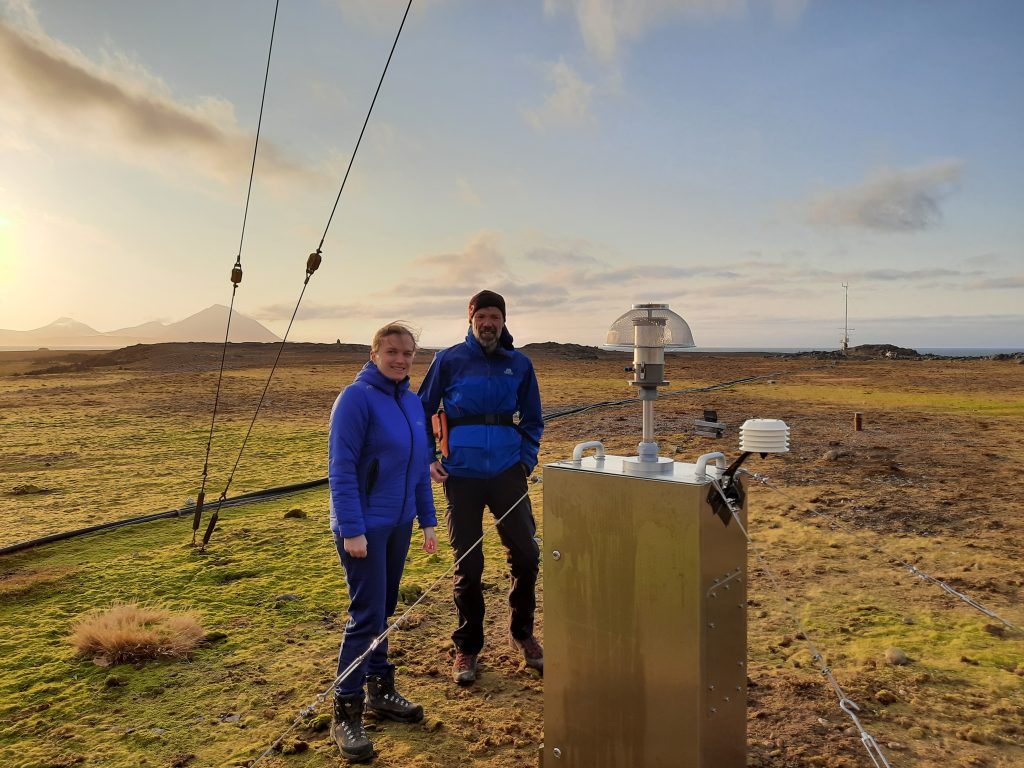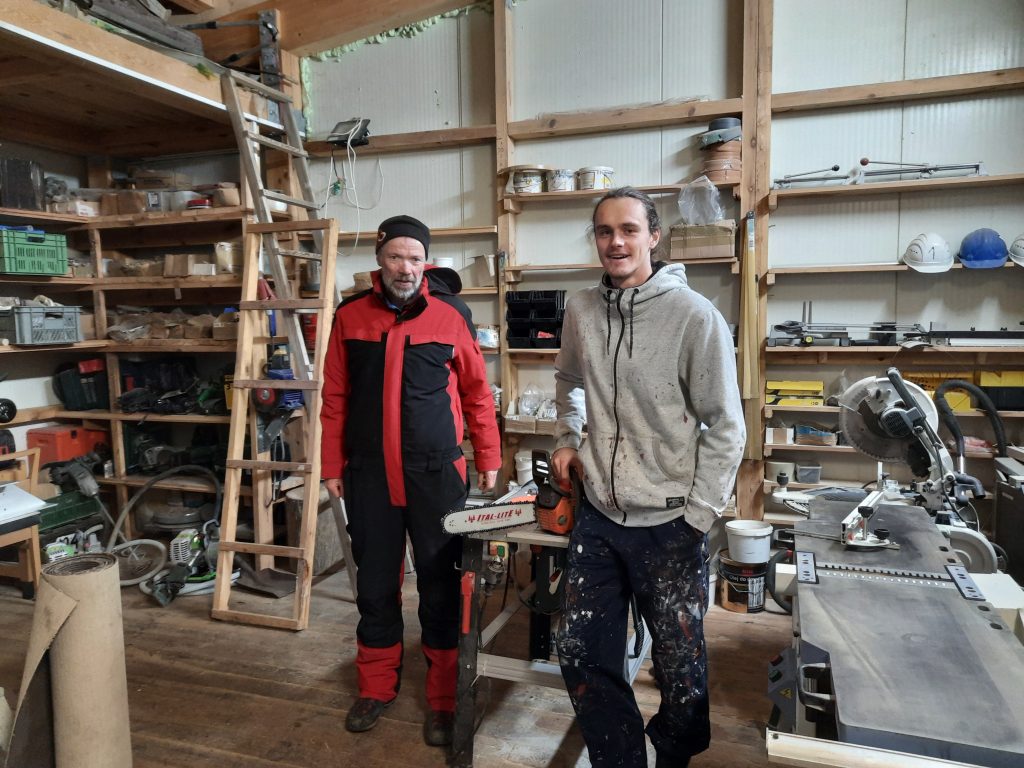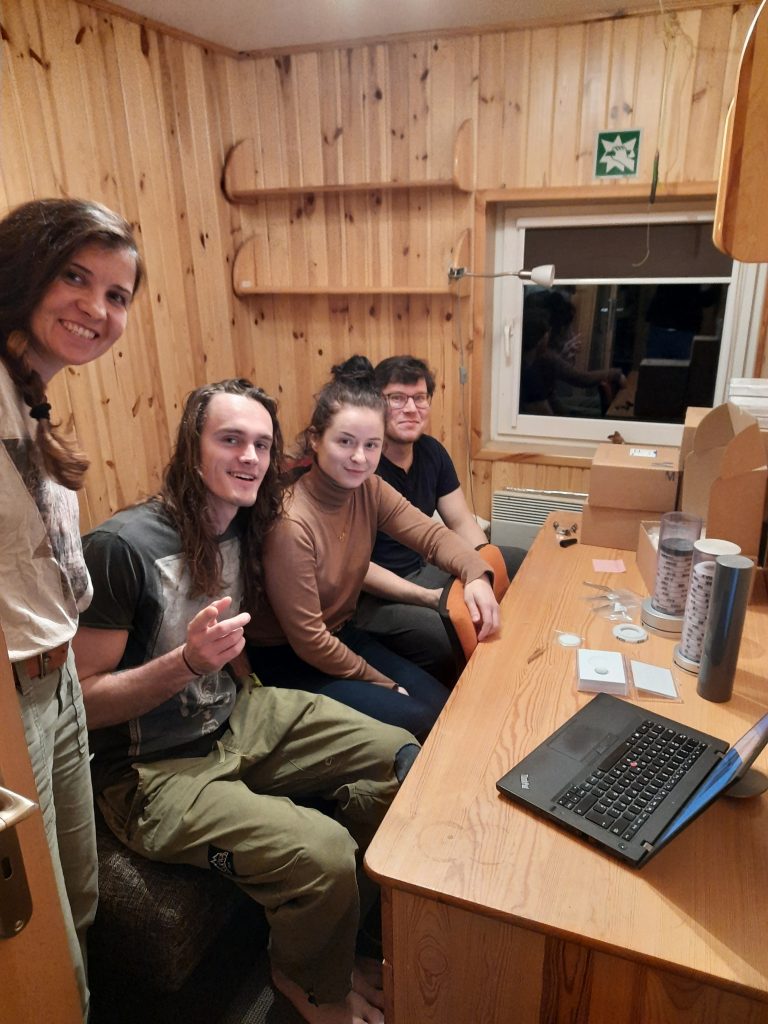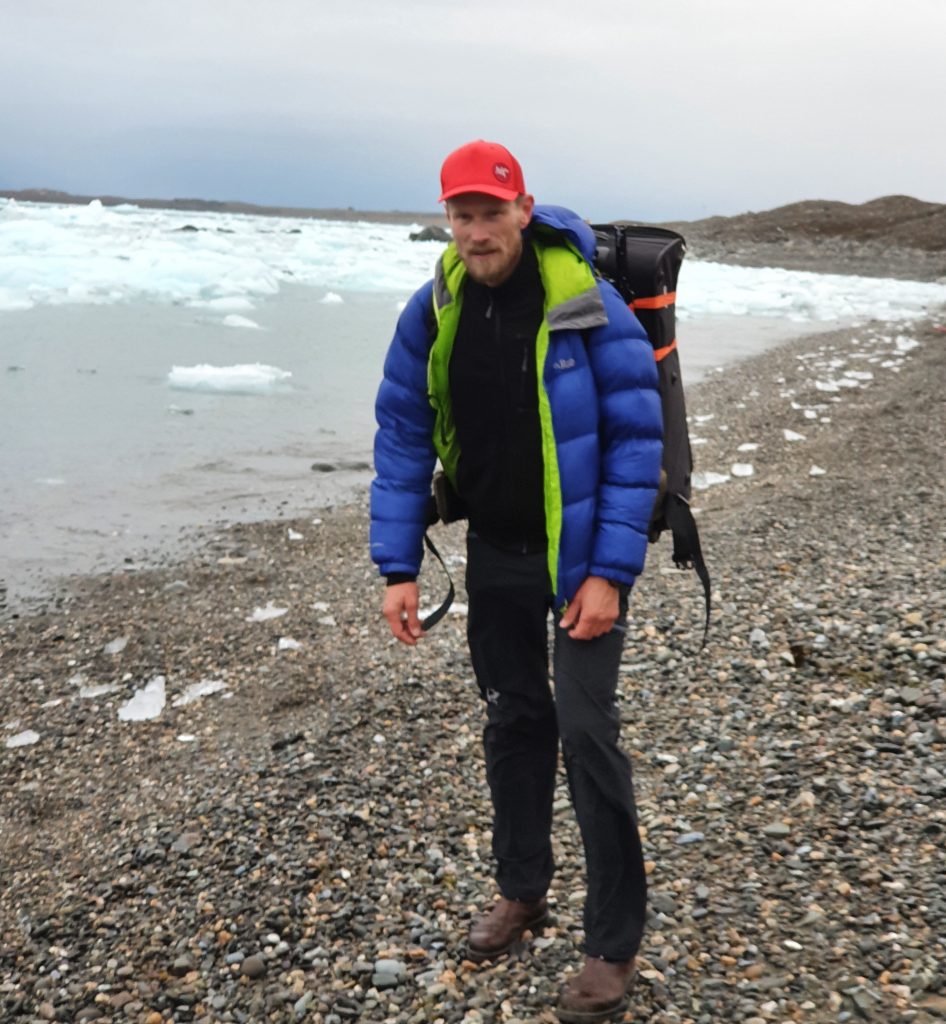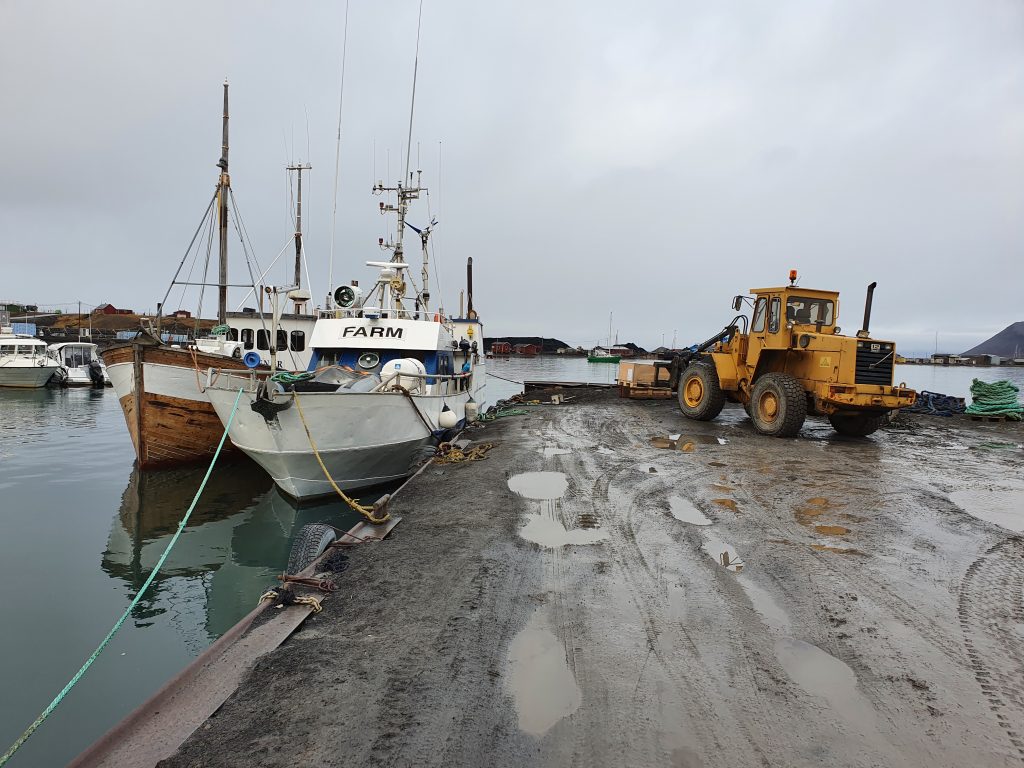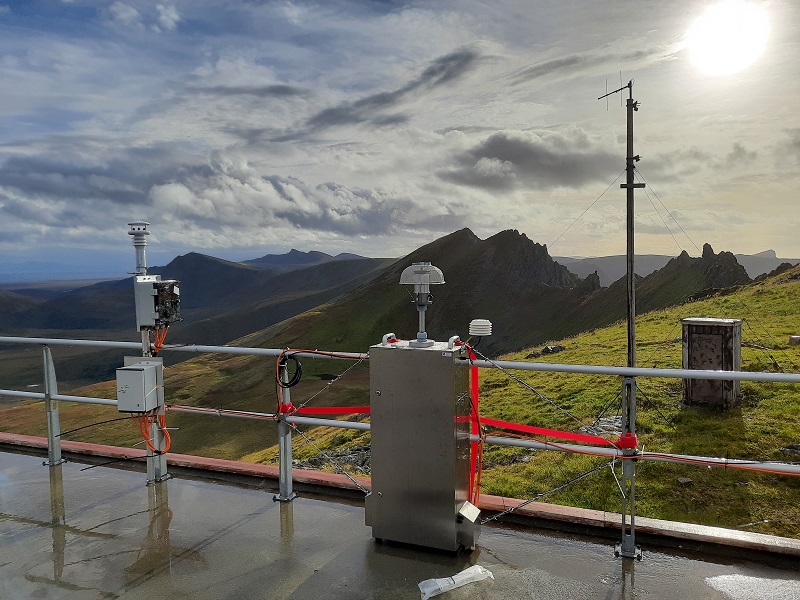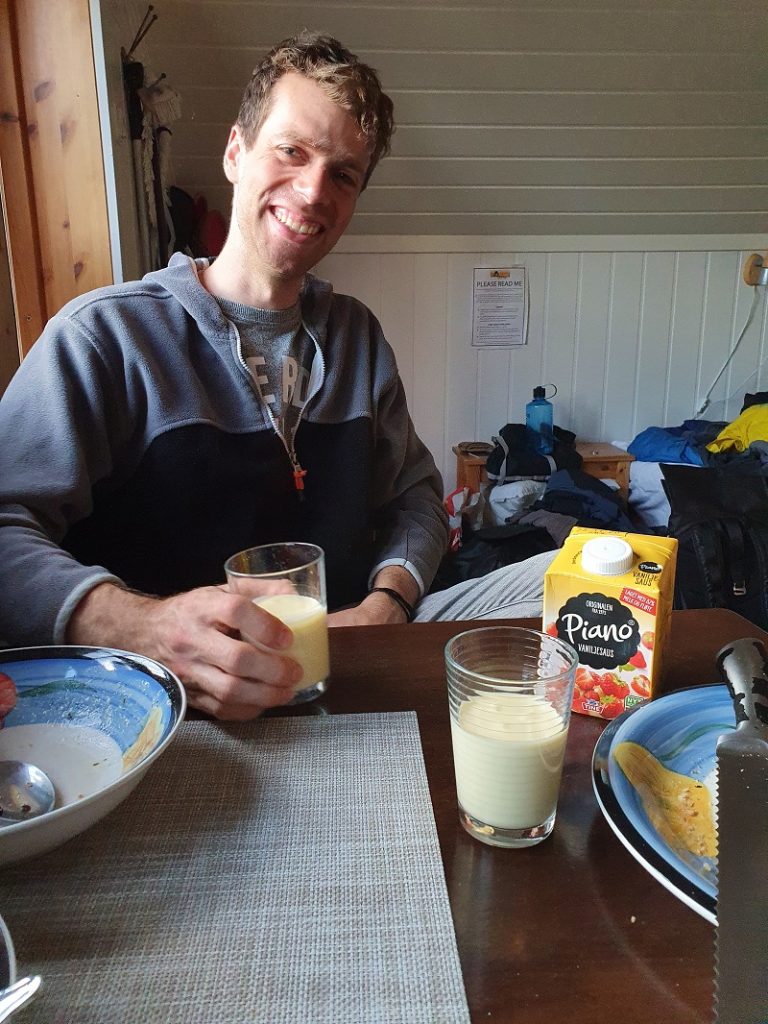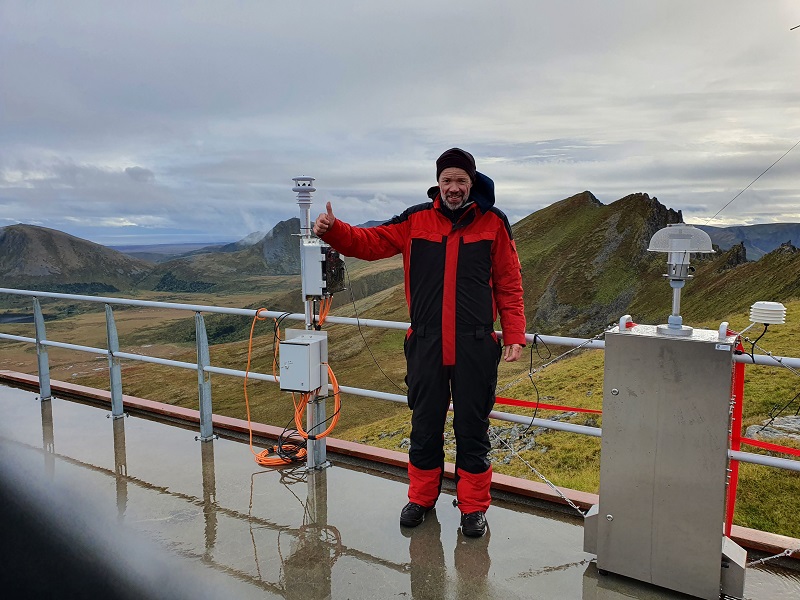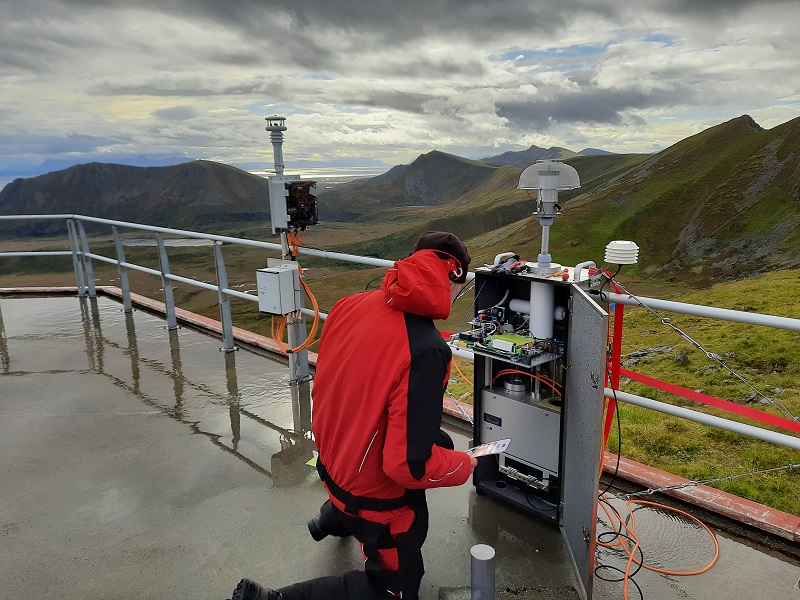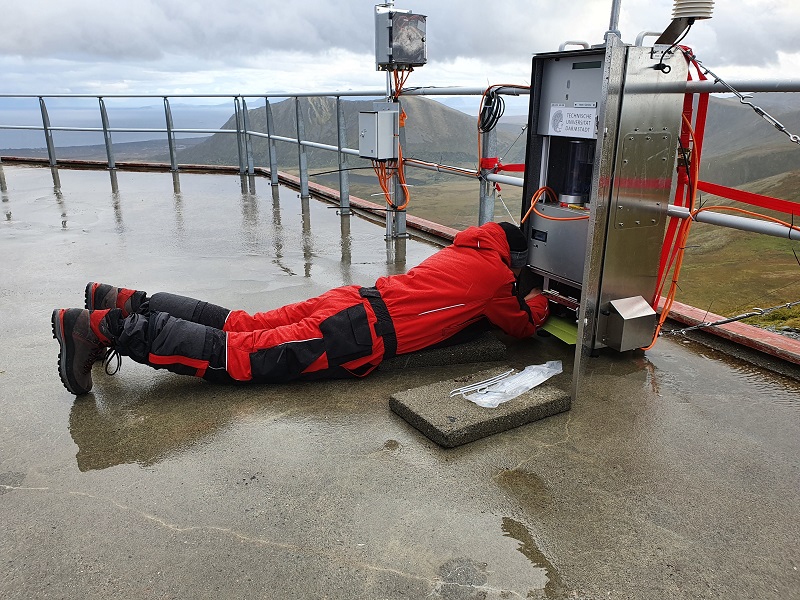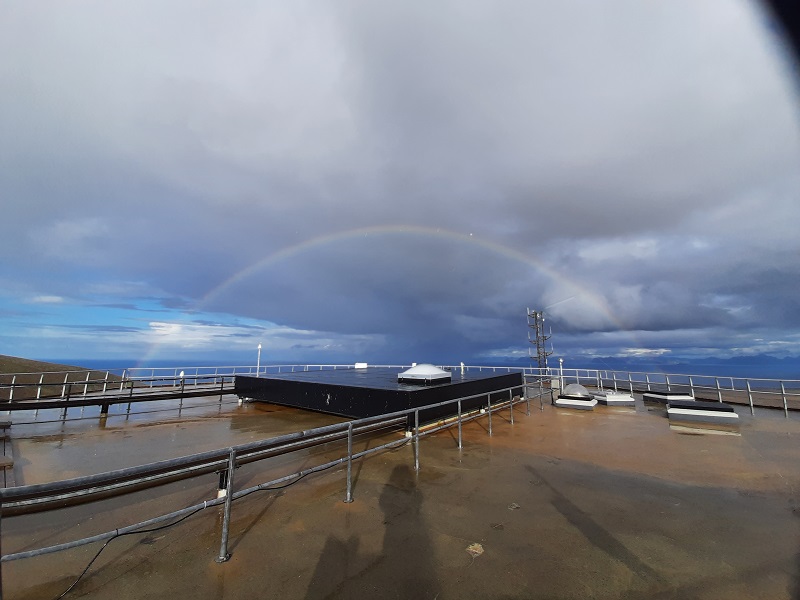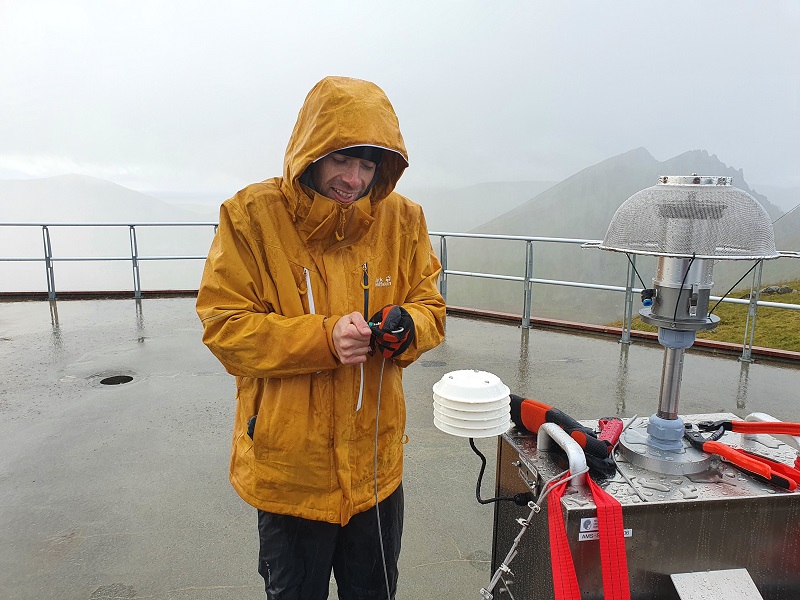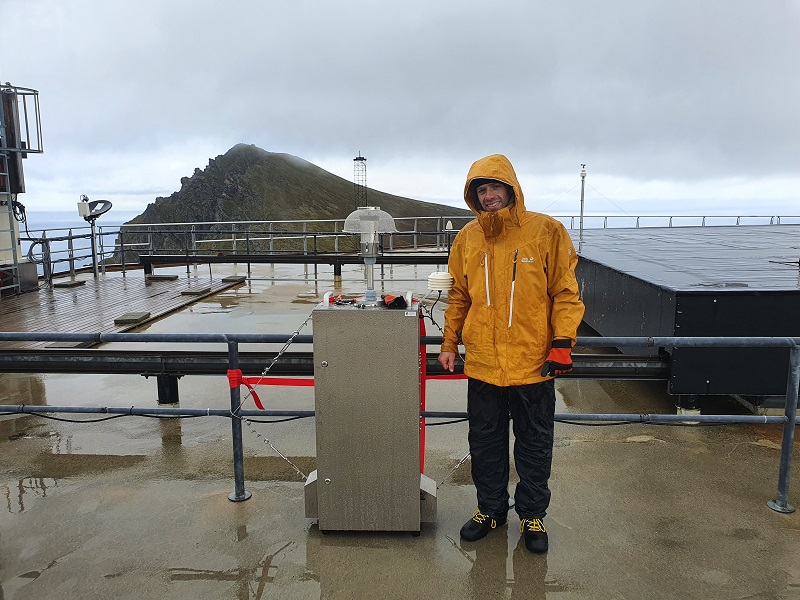Not much time to loose. A lot of challenges have been awaiting us. Starting with determining a suitable position for the sampler, plans for a lasting mounting and wiring could be worked out. Soon we had to realize that our ground pegs were way too small for the soft defrosted grounds during summer time. As well the filter sampler inlet had to be positioned on a higher level, to avoid possible damages from spitsbergenrein. The heat was on… now with combined efforts!!
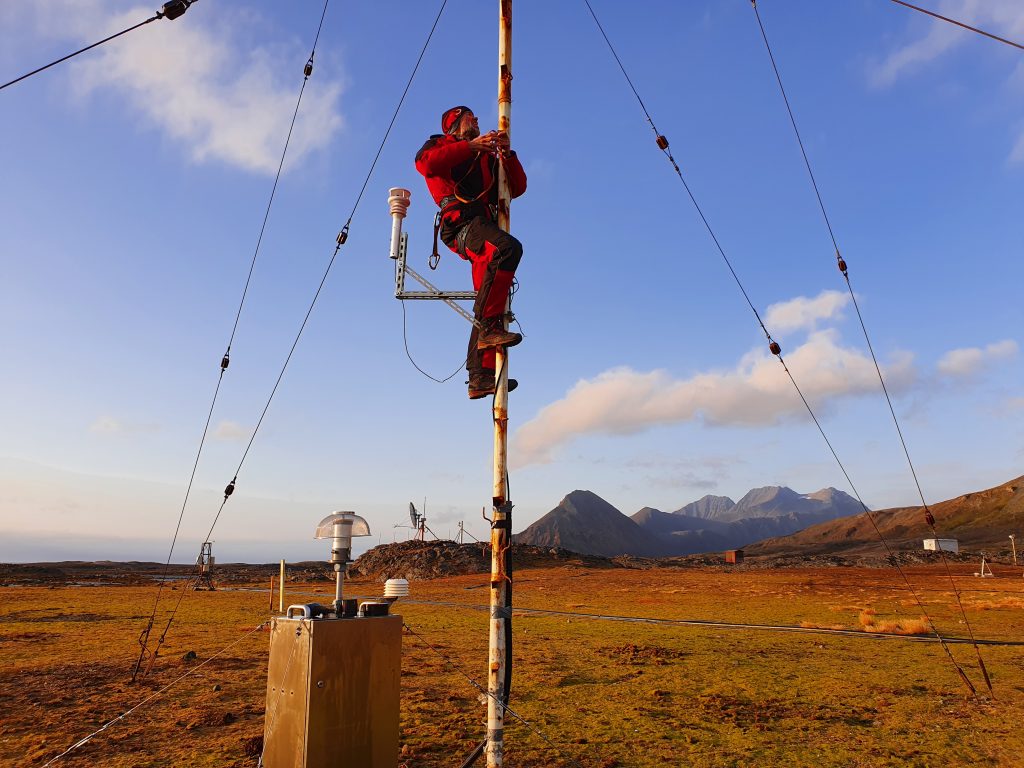
Finally, Stephan in his element! Long-standing experiences as a mountaineer paid off. The weather station could be fixed at its final position.
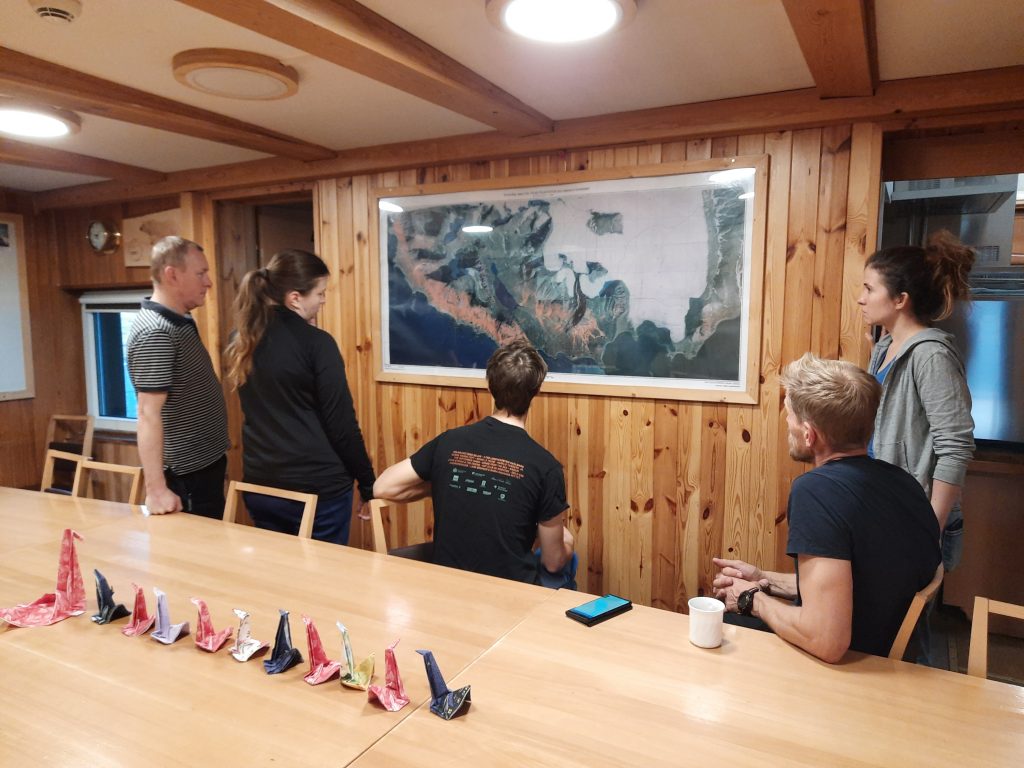
Meanwhile at the comfortable living room, from left to right: Mariusz, Iza, Willam, Tor and Patrycja have been planing field trips for the collection of snow and water samples in the surrounding area.
Grzegorz, who is hiding in the back of the room, has to be praised for taking care of the station. Including handling samples, applying additional settings, ensuring stable electricity supply. Nice work!
Just in time the last milestone could be reached! The final setup had been found and Hornsund was running.
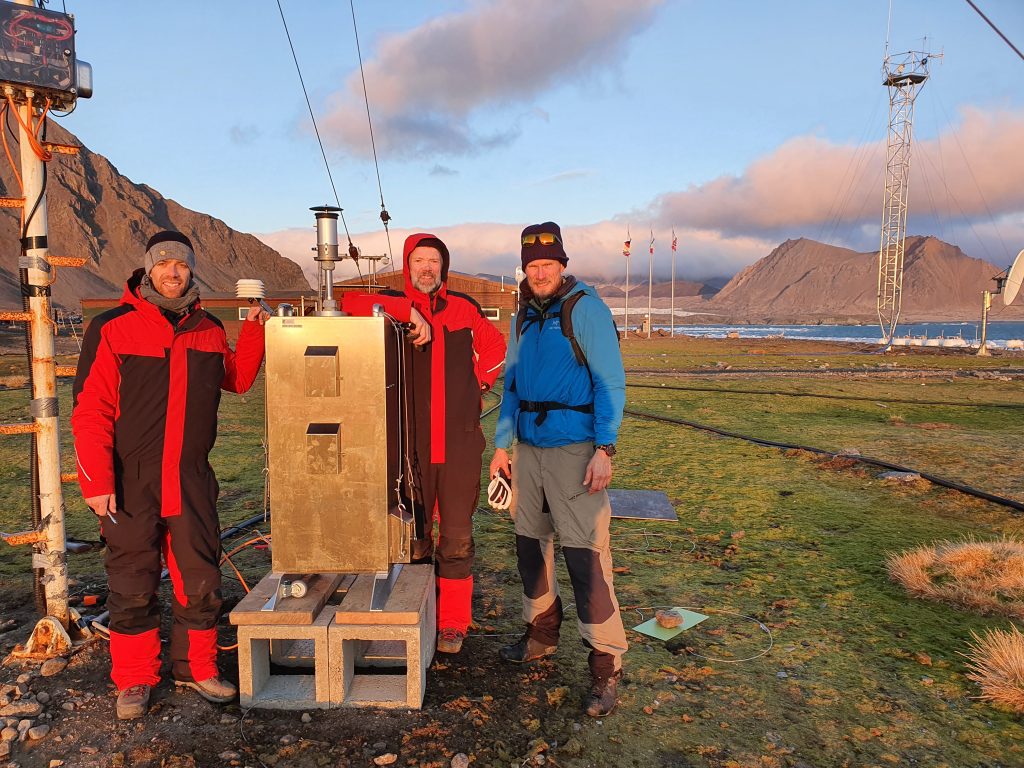
A higher position based on cement blocks, oversized ground pegs and the weather station being connected to the large pole should do it! Ready on time for dinner, one more time enjoying hospitality and sitting together.
An early departure at the last day. Wind blown drifting ice blocked the entry to the water. A distant bay looked promising and appeared to be the only chance, so everyone united and helped carrying our equipment to the vessel. Stick Henningsen and the “Farm” were already awaiting us. Time to say goodbye!
The way back was much more relaxed as expected.. after enjoying nice views of numerous glaciers, our stay in Spitsbergen had come to an end.

Dear Hornsund-Crew, your great support made this possible!! We had a fulfilling time with you and the adventure of our lifetime. We wish you unforgettable days at the station and have a save trip home 🙂


